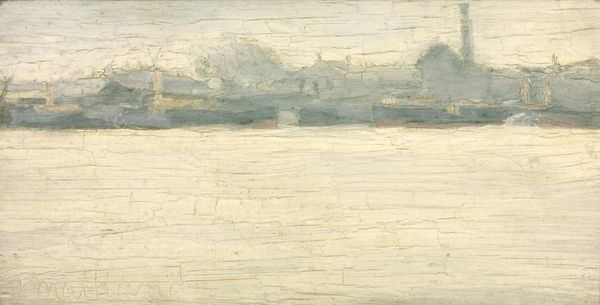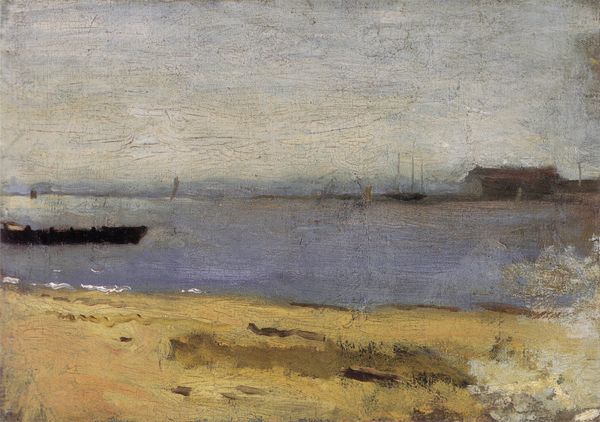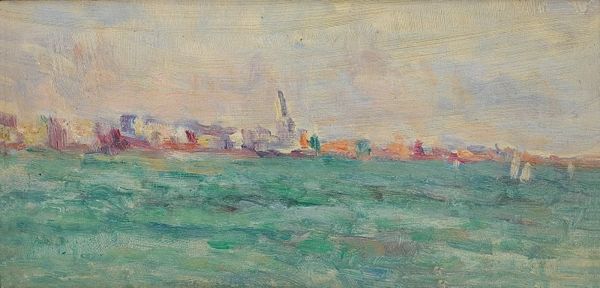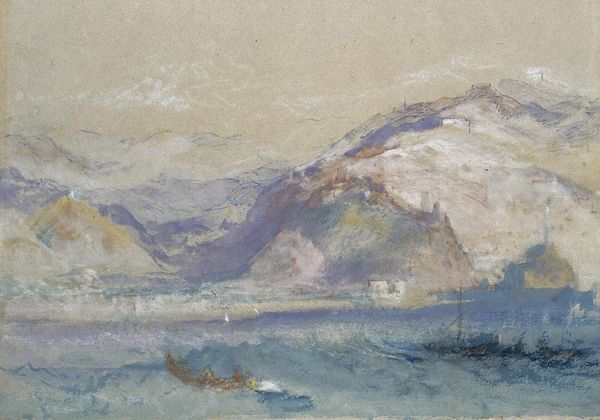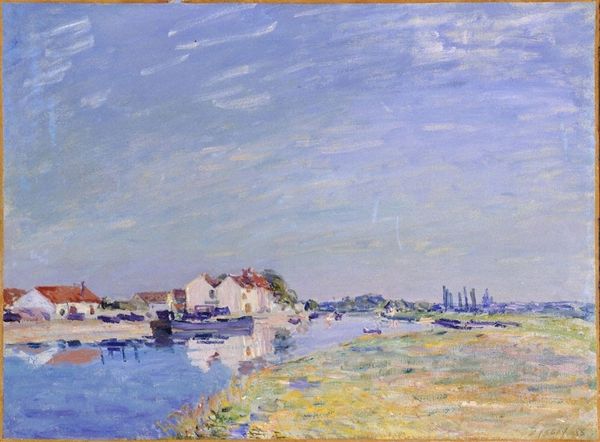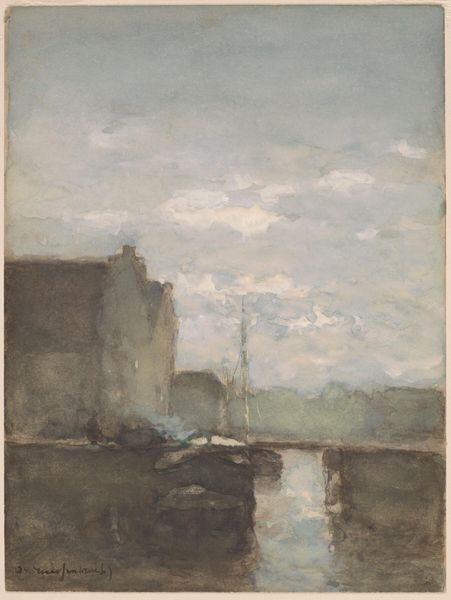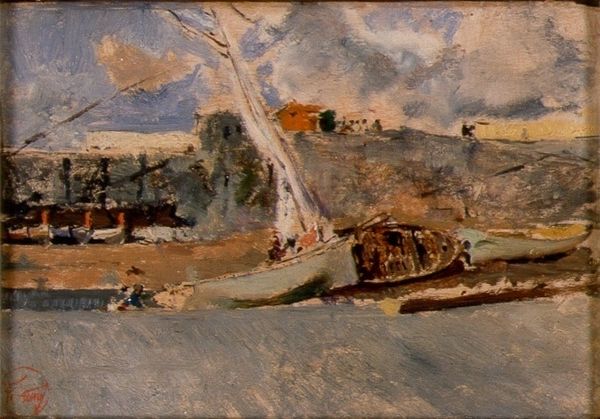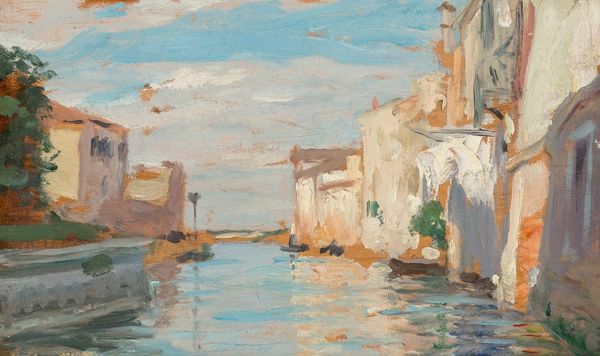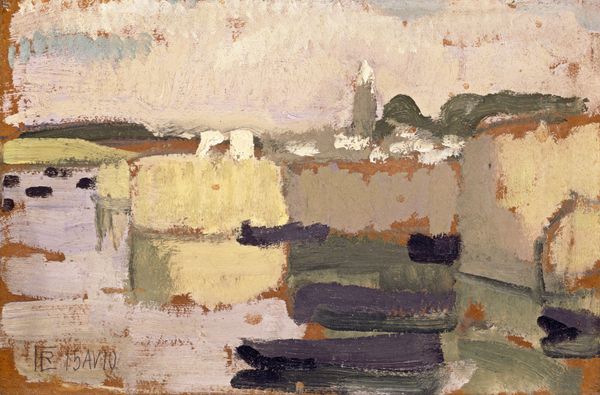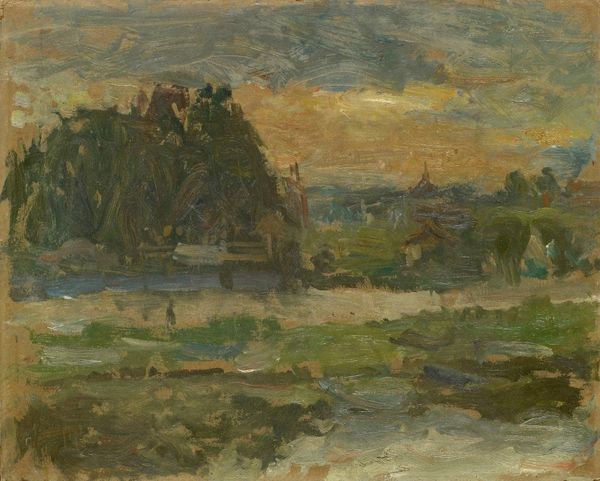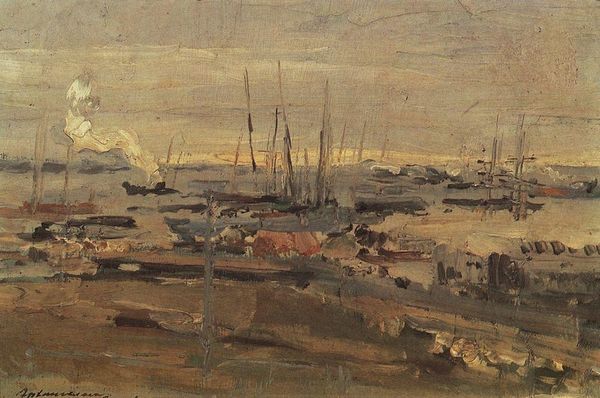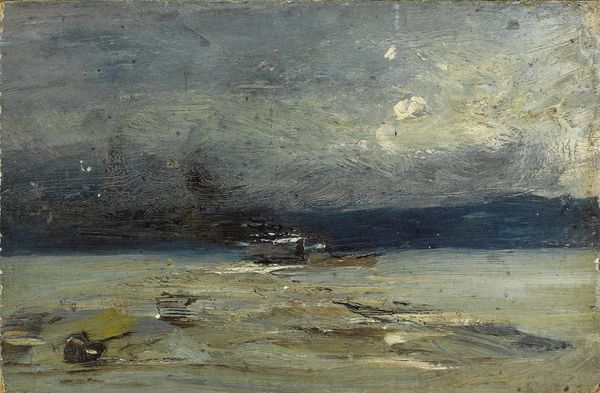
Copyright: Public domain US
Curator: Welcome. Here we have Edwin Dickinson’s "O’Neil’s Wharf," completed in 1913. Dickinson, known for his landscapes and portraits, captures a slice of maritime life with evident modernist impulses. Editor: The initial impact is almost tactile, isn’t it? The heavily impastoed paint surface feels like I could run my fingers across the rough textures and swirling brushstrokes to define the subject. Curator: Precisely. The materiality here cannot be ignored. It feels almost sculptural and yet I cannot ignore how these stylistic features of his artistic expression align with socio-economic realities to speak to larger issues of immigration. Editor: Well, the high impasto does create a visual language where forms are built through accumulations of paint. Do you think it has some kind of signifier, and how does it affect our perception of form and space in the work? The application seems pretty raw, very spontaneous. Curator: The rawness might speak to the artist's rejection of academic polish, but one can hardly ignore that these harbors are a point of departure. In the painting are the wharf workers’ families facing precarious working conditions; such a departure from earlier classical styles to instead show the unvarnished lives of marginalized people feels rather bold. Editor: Yes, that raw, direct handling lends the scene an immediacy. The limited color palette also adds to this feeling—soft blues and whites give a slightly hazy atmosphere that almost veils, not necessarily marginalizes, these potentially complicated details, creating depth, and shaping perspective in compelling ways. Curator: However, it seems we disagree when you use words like 'potentially complicated,' to say such complexities are almost secondary. The figures within the seascape would be an oversimplification of his narrative intent; they stand to echo their social hardships, almost like ghosts within the urban expansion happening in maritime commerce at this time. The haziness, in that context, can allude to how these people are unseen or invisible. Editor: Alright, alright, it appears we find ourselves on opposite sides here, as perhaps is to be expected, though I respect the interjection you provide by adding the element of time as a narrative. Thank you for your interpretation. Curator: And likewise; your ability to interpret form continues to amaze.
Comments
No comments
Be the first to comment and join the conversation on the ultimate creative platform.
